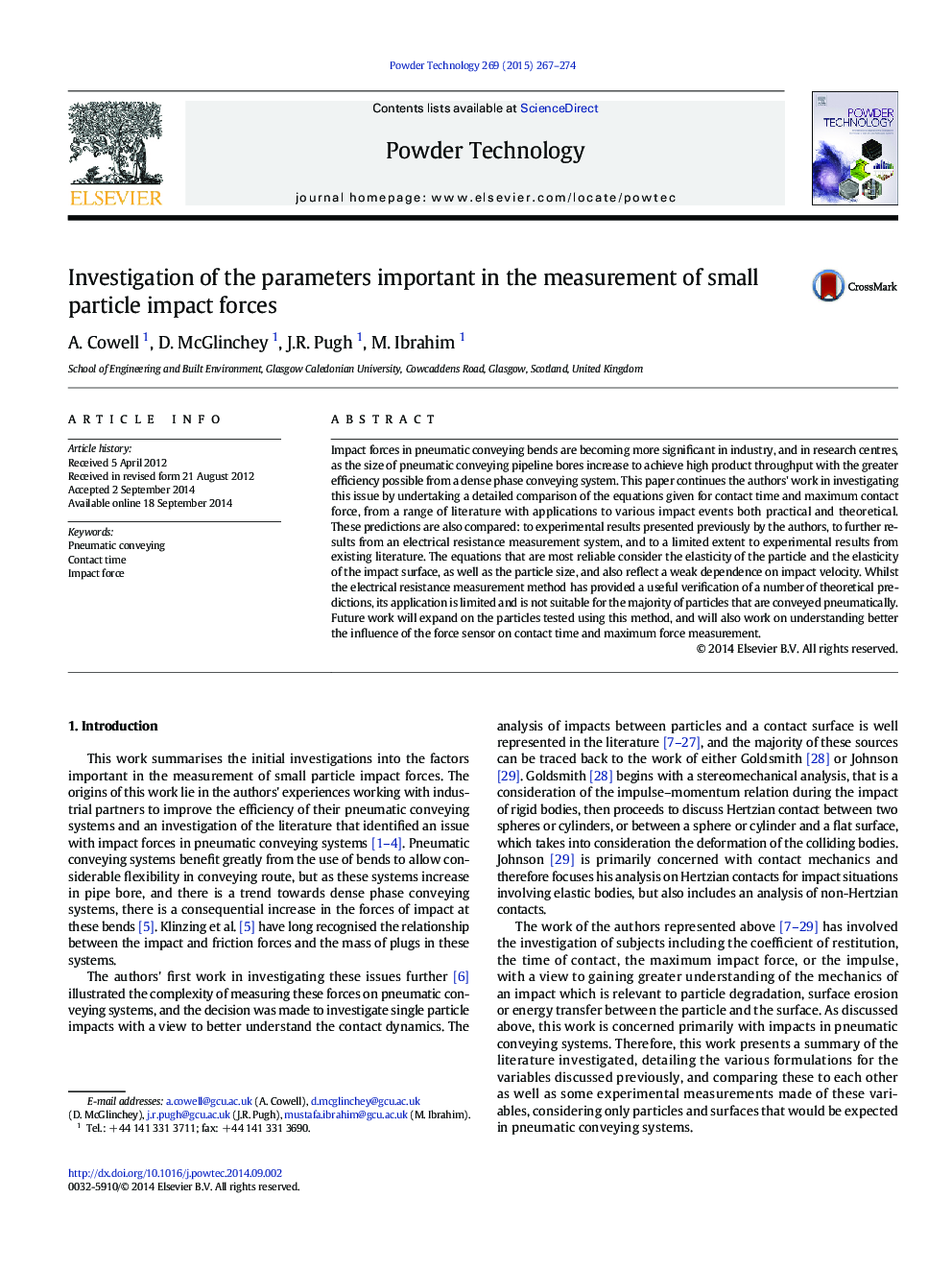| Article ID | Journal | Published Year | Pages | File Type |
|---|---|---|---|---|
| 235862 | Powder Technology | 2015 | 8 Pages |
•Nine equations for impact contact time based on Hertzian theory were compared.•Fourteen different particles of five different materials were studied.•These equations show similar trends in contact time for the particles studied.•A novel electrical resistance contact time measurement system was developed.•Experimental measurements show good agreement with results from several equations.
Impact forces in pneumatic conveying bends are becoming more significant in industry, and in research centres, as the size of pneumatic conveying pipeline bores increase to achieve high product throughput with the greater efficiency possible from a dense phase conveying system. This paper continues the authors' work in investigating this issue by undertaking a detailed comparison of the equations given for contact time and maximum contact force, from a range of literature with applications to various impact events both practical and theoretical. These predictions are also compared: to experimental results presented previously by the authors, to further results from an electrical resistance measurement system, and to a limited extent to experimental results from existing literature. The equations that are most reliable consider the elasticity of the particle and the elasticity of the impact surface, as well as the particle size, and also reflect a weak dependence on impact velocity. Whilst the electrical resistance measurement method has provided a useful verification of a number of theoretical predictions, its application is limited and is not suitable for the majority of particles that are conveyed pneumatically. Future work will expand on the particles tested using this method, and will also work on understanding better the influence of the force sensor on contact time and maximum force measurement.
Graphical abstractFigure optionsDownload full-size imageDownload as PowerPoint slide
